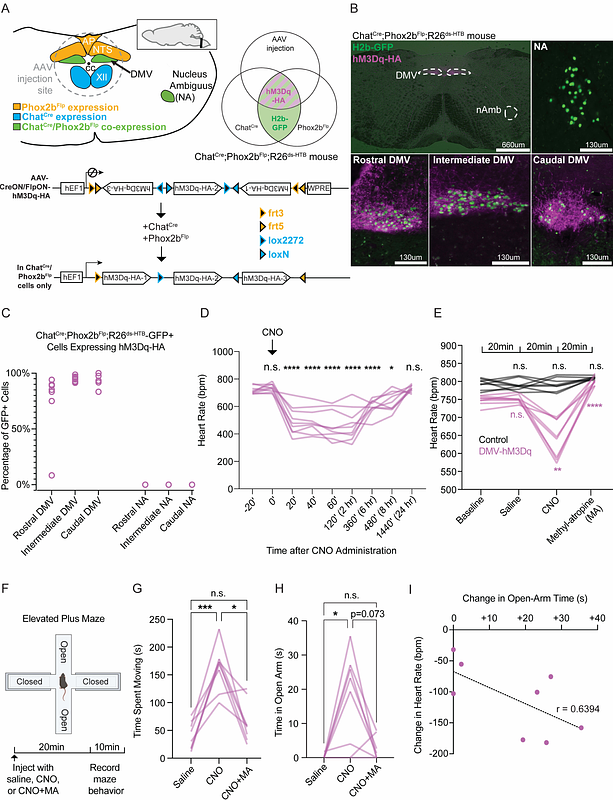Dorsal Motor Vagal Neurons Can Elicit Bradycardia and Reduce Anxiety-Like Behavior

Dorsal Motor Vagal Neurons Can Elicit Bradycardia and Reduce Anxiety-Like Behavior
Strain, M. M.; Conley, N. J.; Kauffman, L. S.; Espinoza, L.; Fedorchak, S.; Martinez, P. C.; Crook, M. E.; Jalil, M.; Hodes, G. E.; Abbott, S. B. G.; Guler, A. D.; Campbell, J. N.; Boychuk, C. R.
AbstractCardiovagal neurons (CVNs) innervate cardiac ganglia through the vagus nerve to control cardiac function. Although the cardioinhibitory role of CVNs in nucleus ambiguus (CVN NA) is well established, the nature and functionality of CVNs in dorsal motor nucleus of the vagus (CVN DMV) is less clear. We therefore aimed to characterize CVN DMV anatomically, physiologically, and functionally. Optogenetically activating cholinergic DMV neurons resulted in robust bradycardia through peripheral muscarinic (parasympathetic) and nicotinic (ganglionic) acetylcholine receptors, but not beta-1-adrenergic (sympathetic) receptors. Retrograde tracing from the cardiac fat pad labeled CVN NA and CVN DMV through the vagus nerve. Using whole cell patch clamp, CVN DMV demonstrated greater hyperexcitability and spontaneous action potential firing ex vivo despite similar resting membrane potentials, compared to CVN NA. Chemogenetically activating DMV also caused significant bradycardia with a correlated reduction in anxiety like behavior. Thus, DMV contains uniquely hyperexcitable CVNs capable of cardioinhibition and robust anxiolysis.